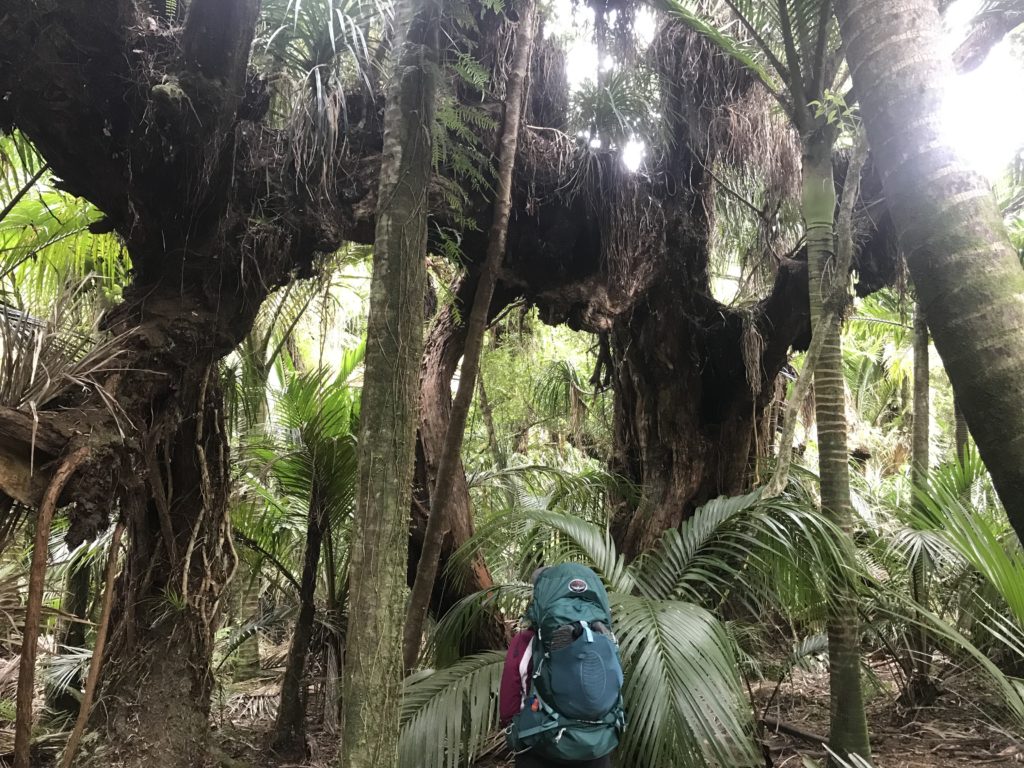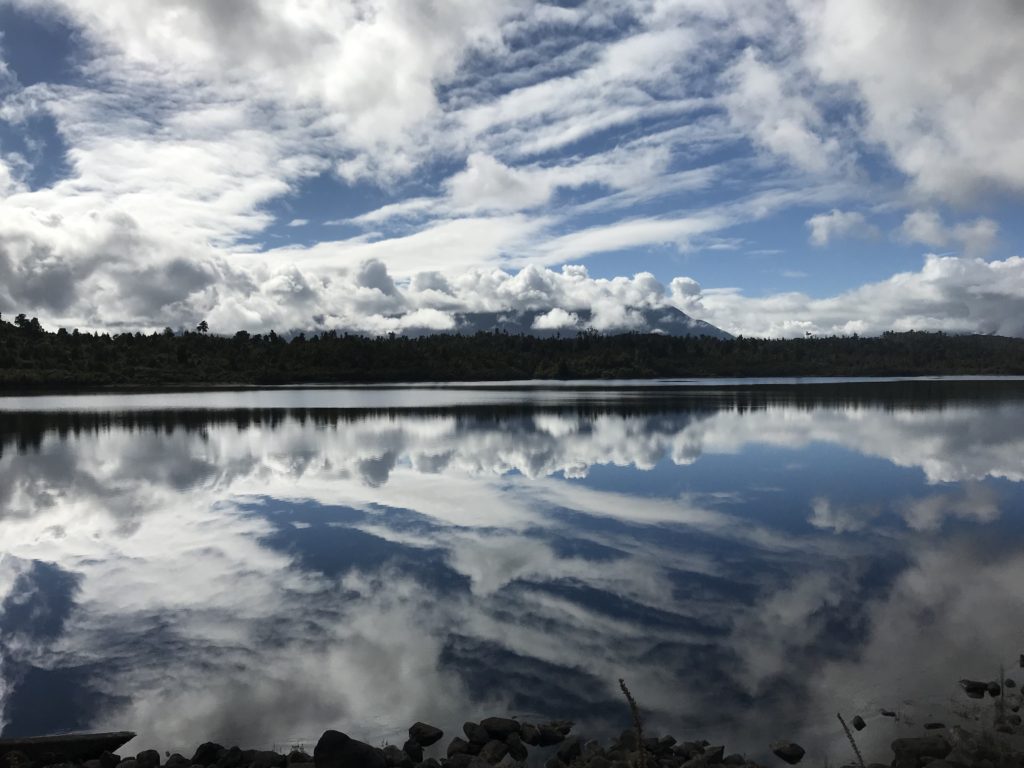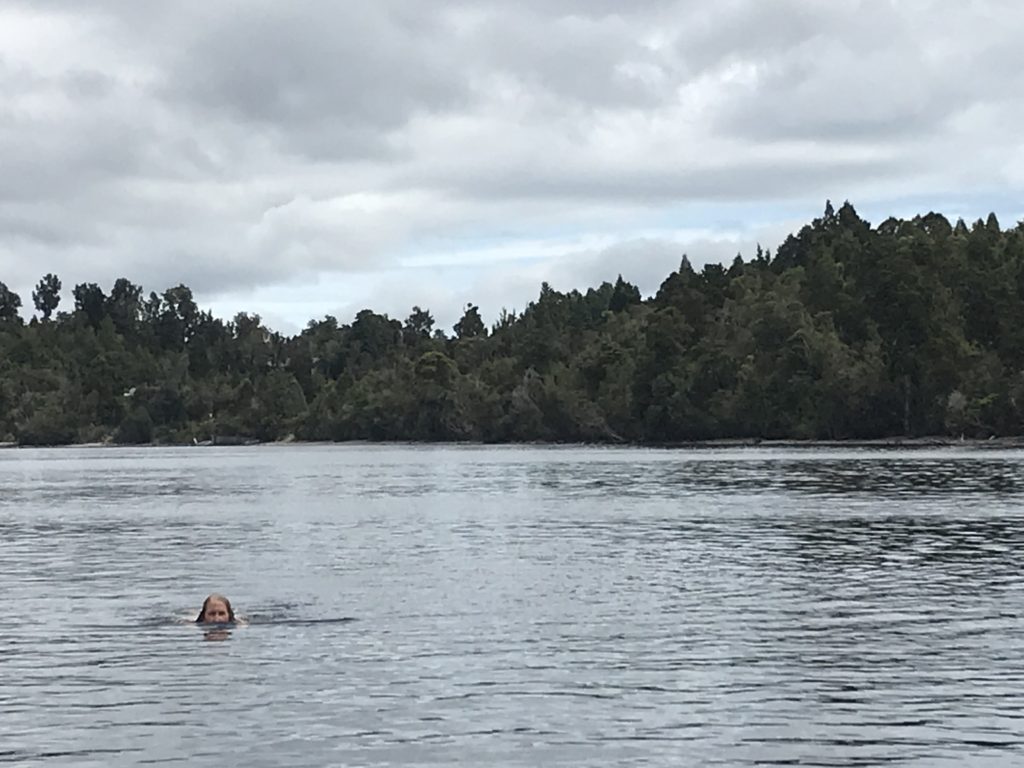Greetings from the South Island of New Zealand, where we have been having a blast soaking up great and varied natural beauty and the friendly and easy-going spirit of the people who call this place home.
New Zealand has two sizable islands—the North and the South—and hundreds of small breakaway ones. The whole country is about the same size as the United Kingdom. From the moment you start verbalizing your interest in visiting New Zealand, you’ll be asked repeatedly which island you plan to visit and how much time you’ll spend on each. I’m not sure if it’s a competition, curiosity, or an icebreaker. Or perhaps all three.
Our last blog covered our travels on the North Island, where we spent a scant two-and-a-half weeks. Since then, for the past month or so, we’ve been exploring the South Island, which represents about 56% of the country’s total land mass but holds less than a quarter of the population. We’ll spend five more weeks on the South Island and won’t have time to see it all. We’ve met two people from the colder parts of North America who came here once to escape the harsh winter months and ended up coming back every year since then. Now that is an idea to ponder!
My Kind of Triathlon
In our last blog, Bob described our 145km canoe trip down the Whanganui River. What he didn’t mention was that the Whanganui was the first stage of a very slow, three-week-long triathlon, designed to whip us back into shape after we indulged in pasta, pizza, and wine almost every day for two months in Italy last fall. Our triathlon would be canoeing-hiking-biking, a unique combination admittedly, with three to ten days of rest, prep, and travel time between each stage.
Our second stage was the Heaphy Track, on the northwest end of the South Island. At 82km, the Heaphy is the longest of New Zealand’s ten Great Walks, and the most varied in terms of ecosystems and vegetation. We hiked it over five days—a leisurely pace my dodgy knee could probably handle. (It did!) We loved the incredible range of landscapes along the track, the crazy trees, lush plant life, odd birds, sweeping views, and an iconic final day hiking along the Tasman coast. (The Tasman Sea lies along New Zealand’s west coast, while the Pacific Ocean lies to the east.)
We give two thumbs up for the well-equipped huts for sleeping, meal preparation, and socializing. We met many wonderful people, from New Zealand, Europe, Australia, and the US.
No bunk room in any country is safe from snoring, but ear plugs offer some relief. The facilities were clean and comfortable, with assorted pots, pans, and gas stoves. Shockingly, some huts even have flush toilets! We learned later that New Zealand’s Department of Conservation is installing flush toilets in all the Great Walk huts to discourage hikers from using the bush. Flush toilets on remote tracks deeply offend Bob, because of their excessive water use and the need to haul the sludge-filled tanks away by helicopter. Now that’s an image you probably don’t want to ponder…
Another point about the Heaphy: it’s a point-to-point trail (not a loop), and it’s not easy to get back to the start once you finish the trail. We decided to book a small charter plane to avoid a six-hour 450km bus ride after a six-hour final-day hike to reconnect with our car. This was unusually indulgent for us, but I believe we earned some credits from all the tent-sleeping and lentil-eating we’d been doing for the rest of this trip. Our pilot, Mit, flew over the trail and the huts we stayed in—a rapid-rewind through the previous five days and sweeping vistas of the surroundings of our narrow path. It was a fine finale to the second stage of our triathlon—and just a tad pricier than the car-shuttle service with a driver who delivers your car then runs home on the trail—a nice 82km “ultra-marathon.”
If you love multi-day hiking (or “tramping,” as it’s called here) into spectacular scenery but are not into carrying a fully loaded backpack and/or camping in all kinds of weather, New Zealand’s Great Walks and huts are a fabulous option. The trails are the best we’ve seen anywhere in terms of grading, drainage, and relatively even surfaces. Several of the Great Walks are extremely popular, especially the Milford Track; booking opens in mid-June for the next season and sells out within minutes. The Heaphy Track is not as sexy, so we were able to book it in December. We’ve also day-hiked sections of several of the other Great Walks: the Tongariro Northern Circuit, the Abel Tasman Coastal Track, the Routeburn, and the Kepler. We may touch down on one more before we’re through. There are lots of other trails with huts throughout New Zealand that are not Great Walks. Many of these are more basic, but they may still be very nice and are much cheaper than the Great Walk huts.

So, where was I? Oh yes, now we’re moving farther down the South Island for the third stage of the triathlon: mountain biking the 132km West Coast Wilderness Trail. What a blast! One of New Zealand’s 12 Great Rides, the trail is mostly off-road, on wide, well-graded tracks, wending its way along the wild west coast, through dense vegetation, past beautiful lakes, and through an old gold mining region. On our last night, we stayed in Hokitika, the setting for Eleanor Catton’s historical novel The Luminaries, which I just read and very much enjoyed. New Zealand’s gold rush of the late 1800s was ever-present in the bike ride and in the novel.
Part of the trail goes along a “water race” canal which was used to sluice gold during the gold rush. The water rushes along one side of the trail while dense woods or a steep drop-off flanks your other side. This was a thrill ride for us, but our new friend Ken landed in the drink with his fully loaded e-bike. Fortunately, a kind chap helped him extricate from the canal. We couldn’t fix his electronics, but we at least treated him to dinner and a beer that night in Hokitika as a wee solace. Coincidentally, Ken is a direct descendant of a character who is fictionalized in The Luminaries.
This was our first time riding mountain bikes and on mountain bike trails for any duration, and, having avoided falling in the drink or hurtling over a steep drop off or into a tree, we’re considering doing it again. The mountain bike gearing was so good that I made it up all the hills without dismounting (except for one short, very steep burst). As one who dreads encounters with hills while cycling, this was quite an accomplishment for me. It may also have been good for our marriage since cycling up hills is one of Bob’s favorite activities.
We successfully completed our New Zealand Triathlon in 14 days! Or 84 hours if we estimate six hours of effort each day—averaging a bit over 4km per hour. Is this good? Not in the slightest! But that was obviously not the point, and we made a jolly romp of it all the way. Also, we were aided and abetted by near-perfect weather. The raincoats and rain pants were always close at hand, but we only used them one day for a few hours.
After the Triathlon
We continued moving down the wild west coast of the South Island towards Queenstown where we were due to meet our dear friends Donna, Helen, and Marty on February 18 for two weeks of group fun. Along the way we enjoyed visiting:
Franz Josef Glacier. The largest of several South Island glaciers, Franz Josef is receding so rapidly that in recent years the only way to see it up close is aboard a helicopter. We decided to hike to the nearest viewing spot instead, but plenty of other people chose the chopper. The result is that you are in a stunningly beautiful place with a constant drone of choppers from morning until dusk. Seriously, I haven’t heard so much helicopter noise since Apocalypse Now. Ironic? Uh huh. But I’m not clear if the ever-present signs enthusiastically offering What You Can Do to Stop Global Warming! were on to or oblivious to the irony. None advised us to just say no to choppers.
Jackson Bay. We couldn’t resist driving all the way to the end of the West Coast road. We splurged on delicious fish and chips at a charming place called the Cray Pot that appeared to be the only commercial establishment of any kind in the area. So quiet and beautiful.
Haast Pass. There are only three places where you can cross the Southern Alps, and Haast is the southernmost. It’s a fabulous scenic drive through the mountains, descending down toward Lake Wanaka.

So this blog brings us up to February 18, the day our lives were to be infinitely enriched by the arrival of our good friends. We’ve invited them to be guest bloggers for our next posting. We anxiously await their manuscript. (No pressure!)






















You are on a fabulous trip to gorgeous country that Betty and I have managed to get a glimpse of on TV movies that are filmed in New Zealand.
Who would ever have imagined that so much natural beauty could be
cramped into two islands in the South Pacific?
We are proud of our own Rocky Mountains and natural wonders of the
American West but now realize that it is New Zealand that has such incomparable natural wonders.
They used to sing a song after World War I about the returning American
soldiers that goes “How are you going to keep them on the farm after they’ve seen Paree?” You can subtitute New Zealand for Paree.
Hey, I take your point about helicopters and the great eco-surround, but I had a truly memorable three hours up on Franz Josef glacier (and I doubt my shared helicopter ride augmented my carbon footprint too much more than your chartered flight). Yes to occasional indulgences!